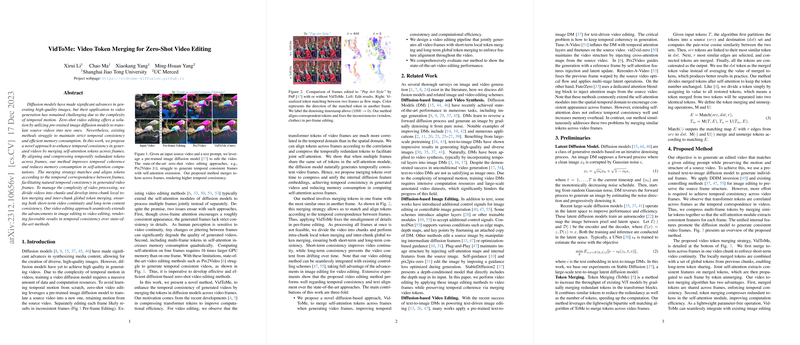Overview
The field of artificial intelligence has long engaged in improving how machines can interpret and manipulate visual media. While significant strides have been made in image generation with diffusion models, video generation remains a complex challenge due to the intricacies of temporal motion. The paper introduces "VidToMe," an innovative method that improves temporal consistency in video editing without the need to train on vast amounts of data. This technique is particularly suited for zero-shot video editing, where pre-trained image diffusion models translate source videos into new ones while retaining the original motion.
Temporal Coherence
One of the main issues with current video generation techniques is ensuring strict temporal consistency. Existing models often struggle to produce frames with consistent details over time, negatively impacting the perceived quality. The VidToMe method directly addresses this by aligning and compressing tokens (fundamental processing units in self-attention operations of diffusion models) across frames, effectively enhancing temporal coherence. The approach matches tokens based on temporal correspondence between frames, allowing the natural flow of time to be maintained in the generated content.
Computational Efficiency
Processing video involves handling a tremendous amount of data, making computational efficiency a key challenge. VidToMe innovatively handles this by introducing intra-chunk local token merging and inter-chunk global token merging. This strategy not only ensures the needed short-term continuity within video chunks but also maintains long-term content consistency throughout the video. By operating in chunks, VidToMe manages the complexity of video processing in a way that reduces memory consumption and computational burden.
Integration and Performance
The proposed video editing approach is seamlessly extendable, leveraging advancements from image editing diffusion models. VidToMe can work in harmony with existing image editing methods, bringing about text-aligned and temporally consistent video editing results. Through comprehensive experimentation, VidToMe has demonstrated superior performance over existing state-of-the-art methods in producing temporally consistent videos with high fidelity to editing prompts.
Contributions
The paper outlines three main contributions of VidToMe to the field of AI-based video editing:
- A novel method for enhancing temporal consistency in video generation by merging self-attention tokens across frames.
- A dual strategy for local and global token merging, facilitating both short-term and long-term consistency in videos.
- Demonstrated superiority in maintaining temporal consistency and computational efficiency compared to state-of-the-art zero-shot video editing methods.
In conclusion, "VidToMe: Video Token Merging for Zero-Shot Video Editing" presents a breakthrough in the approach to video editing, advancing the capabilities of AI in understanding and manipulating temporal media. With its improved consistency and efficiency, this method sets a new standard for future research and applications in video generation and editing.
